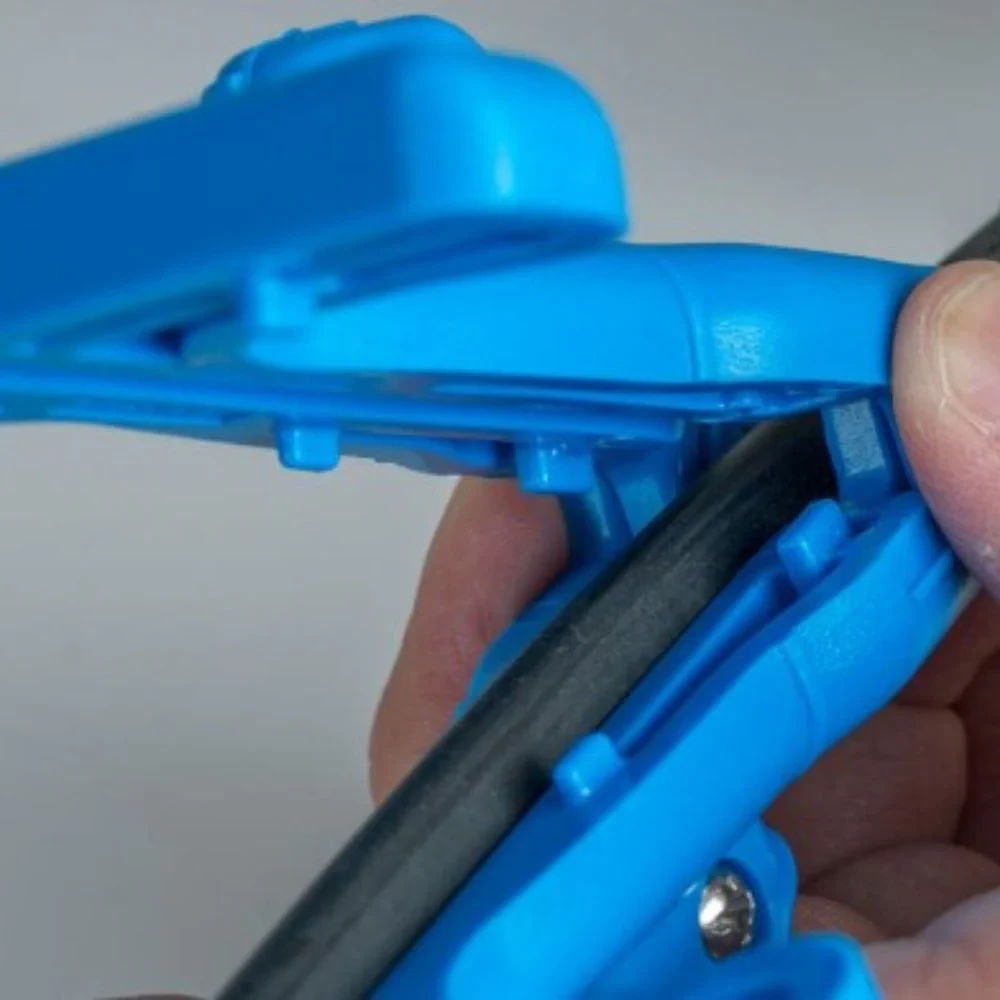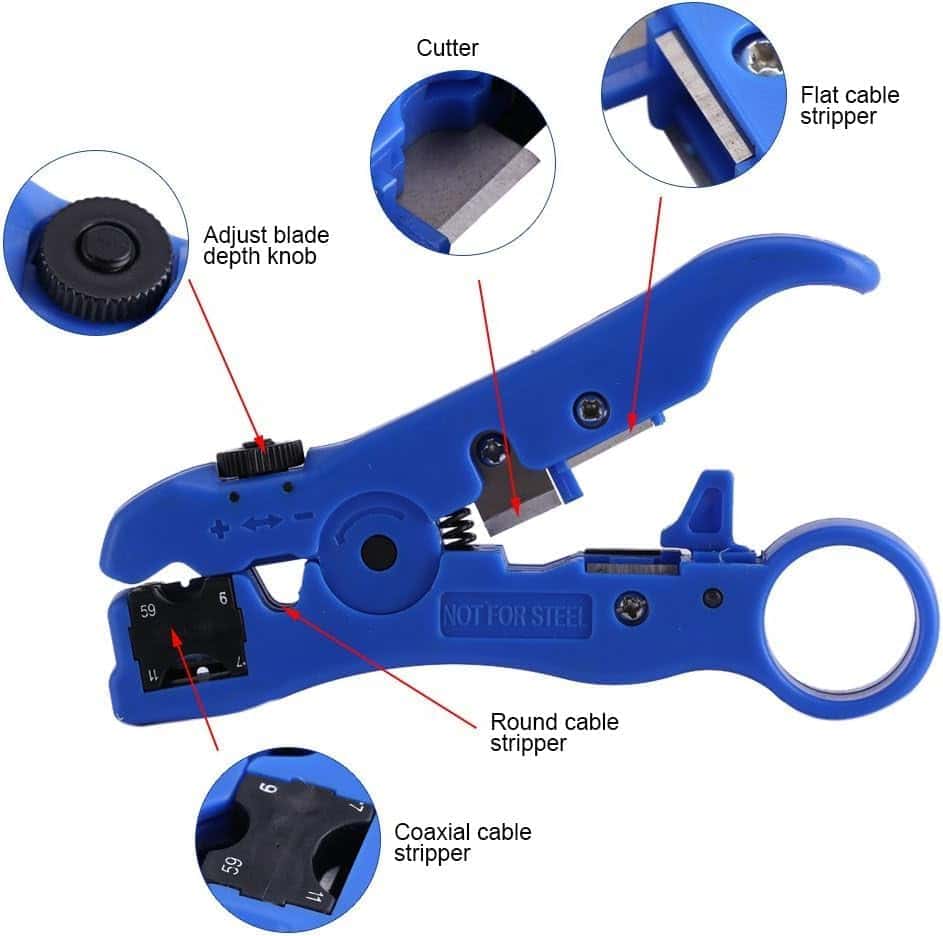
Drop Cable Slitter
The Essential Guide to Drop Cable Slitters: A Must-Have Tool for Cable Technicians
When it comes to telecommunications installations, precision and efficiency are key. Whether you're working with fiber optic or coaxial cables, having the right tools can make all the difference. One such tool that plays a crucial role in cable installation is the drop cable slitter. In this blog, we’ll explore what a drop cable slitter is, how it works, and why it’s a must-have tool for anyone working with drop cables.
What is a Drop Cable Slitter?
A drop cable slitter is a specialized tool designed to slit or score the outer jacket of a drop cable. Drop cables, commonly used for residential or business telecommunications connections, often consist of fiber optic or coaxial cables protected by an outer layer of insulation. The slitter is used to remove this jacket without damaging the delicate wires inside, allowing technicians to gain access to the inner components for splicing or further installation work.
The tool features an adjustable blade or a rotating mechanism that allows the technician to control the depth and direction of the slit. This ensures the inner wires remain intact and free from accidental cuts, which could compromise the integrity of the cable.
Types of Drop Cable Slitters
Drop cable slitters come in various shapes and sizes, depending on the type of cable you're working with. Here are the most common types:
-
Coaxial Cable Slitters

These slitters are specifically designed for coaxial cables, which are commonly used for internet and cable TV connections. Coaxial cables are thicker than fiber optic cables and often have a braided shield. A coaxial drop cable slitter will carefully slit the outer jacket without damaging the shielding or inner conductors. -
Fiber Optic Cable Slitters

Fiber optic cables require more precision than coaxial cables due to the fragile nature of the fibers inside. Fiber optic drop cable slitters are designed with delicate blades or scoring mechanisms to strip the outer jacket without harming the fibers. -
Universal Slitters
Some drop cable slitters are designed to handle both coaxial and fiber optic cables, making them versatile for technicians working with different types of cables. These tools usually have adjustable settings to accommodate the specific type and size of cable you're working with.
Why Is a Drop Cable Slitter Important?
1. Precision and Accuracy
The main advantage of using a drop cable slitter is the precision it offers. Cables can be easily damaged if the outer jacket is cut too deep or too shallow, which can interfere with the performance of the cable or make it impossible to install correctly. A slitter allows for a controlled and accurate cut, which is essential when working with expensive or fragile cables.
2. Time Efficiency
Without a proper slitter, technicians might resort to using knives or other tools to strip cables. This process can be slow and prone to mistakes. A drop cable slitter streamlines the job, enabling technicians to work faster without sacrificing quality. The design of the tool also makes it easy to perform consistent slits across multiple cables, reducing downtime during installations.
3. Cable Integrity
Perhaps the most critical reason to use a drop cable slitter is to protect the integrity of the cable itself. Whether you’re working with fiber optic cables that carry high-speed data or coaxial cables that support video and internet services, it's essential to avoid damaging the inner wires or fibers. A drop cable slitter minimizes the risk of nicking or cutting the inner components, which can cause signal loss or degradation.
4. Versatility
Many modern drop cable slitters come with adjustable settings or interchangeable blades, allowing technicians to work with a wide range of cable types and sizes. This versatility makes it an essential tool for anyone working in telecommunications, whether you're an installer, technician, or DIY enthusiast.
How to Use a Drop Cable Slitter
Using a drop cable slitter is fairly simple, but it requires care and attention to detail. Here’s a step-by-step guide on how to use the tool:
-
Choose the Right Slitter
Select the appropriate drop cable slitter based on the type and size of cable you're working with. -
Adjust the Blade Depth
Most drop cable slitters allow you to adjust the blade depth. Set the blade to the appropriate depth for the outer jacket, ensuring it won’t cut too deep into the inner cables. -
Position the Cable
Place the cable in the slitter’s designated slot or blade guide. Ensure the cable is positioned securely to prevent slipping during the cutting process. -
Make the Cut
Slowly move the tool along the cable, applying gentle pressure. The blade will score the outer jacket as you pull the tool along the length of the cable. -
Inspect the Cable
Once the slit is made, inspect the cable to ensure the inner wires are undamaged and the slit is clean. If needed, carefully peel away the jacket to expose the inner wires. -
Continue with the Installation
Once the outer jacket is removed, you can proceed with splicing, termination, or other necessary steps to complete the installation.
Tips for Maintaining Your Drop Cable Slitter
To get the most out of your drop cable slitter, it's important to maintain it properly:
- Keep it clean: After each use, clean the slitter to remove any dust or debris that may have accumulated. This helps maintain its sharpness and ensures it functions properly.
- Replace dull blades: Over time, the blades on the slitter may dull, leading to less precise cuts. Replace the blades as needed to ensure optimal performance.
- Store it properly: Keep the tool in a dry, safe place to prevent any damage to the blade or other components.
The drop cable slitter is an essential tool for any technician or installer working with drop cables. Whether you’re dealing with fiber optic cables or coaxial cables, the ability to make precise, clean slits without damaging the internal components is critical. Investing in a high-quality drop cable slitter will save you time, ensure the integrity of the cables, and make your installations more efficient.
With the right tool in hand, you can approach every installation with confidence, knowing that your cable preparation will be flawless and that your work will stand the test of time.
176
0
746
172

